The Fiddle Leaf Fig (Ficus lyrata) is a highly sought-after houseplant, celebrated for its large, glossy leaves and striking visual appeal. However, its beauty comes with specific care requirements that can be challenging for even seasoned plant enthusiasts. This detailed guide will delve into the essential aspects of caring for your Fiddle Leaf Fig, including its light needs, watering practices, temperature preferences, and the importance of a consistent environment. By understanding and addressing these factors, you can ensure that your Fiddle Leaf Fig flourishes and remains a stunning addition to your home.
1. LIGHT: Establishing the Right Lighting Conditions
The Significance of Light
Light is perhaps the most crucial factor influencing the health and growth of your Fiddle Leaf Fig. Originating from the rainforests of West Africa, these plants naturally thrive under the dappled light of larger trees. Therefore, understanding their light requirements is key to successful cultivation.
Ideal Lighting Conditions
- Bright, Indirect Light: The Fiddle Leaf Fig prefers bright, indirect sunlight. Ideally, position it near a south- or west-facing window where it can soak up ample light without being subjected to direct sun exposure.
- Filtered Light Options: If direct sunlight is too intense, consider using sheer curtains or blinds to diffuse the light. This mimics the plant’s natural environment and helps prevent leaf scorch.
- Regular Rotation: To promote even growth, rotate your Fiddle Leaf Fig every few weeks. This practice helps ensure that all sides of the plant receive adequate light, preventing it from leaning toward the light source.
Identifying Light-Related Issues
Recognizing how your Fiddle Leaf Fig responds to light conditions is essential for maintaining its health. Here are some common symptoms to watch for:
- Leaf Drop: If your Fiddle Leaf Fig starts dropping leaves, it may indicate insufficient light. This often occurs when the plant is too far from a light source.
- Brown, Crispy Spots: Brown, scorched patches on the leaves are signs of too much direct sunlight. These areas indicate that the leaves are suffering from sunburn.
- Leggy Growth: If your plant exhibits elongated stems with sparse foliage, it may be a sign that it’s reaching for light. This leggy appearance can detract from the plant’s overall beauty and health.
By closely monitoring your plant’s light exposure and adjusting its position as necessary, you can create an ideal environment for optimal growth.
2. WATER: Achieving the Right Balance in Watering
The Critical Role of Watering
Watering your Fiddle Leaf Fig is another vital aspect of its care. Both overwatering and underwatering can lead to serious problems, making it crucial to establish a balanced routine.
Effective Watering Strategies
- Soil Moisture Check: Always assess the moisture level of the soil before watering. If the top inch feels dry, it’s time to water. If it’s still damp, wait a few more days before checking again.
- Frequency of Watering: Typically, Fiddle Leaf Figs should be watered every 1-2 weeks, with adjustments made for seasonal changes, humidity, and light conditions. During the growing season (spring and summer), they may require more frequent watering, while in fall and winter, watering needs decrease.
- Quality Potting Mix: Using a well-draining potting mix is essential for preventing waterlogged conditions. A mix specifically designed for Fiddle Leaf Figs, or a blend of potting soil, perlite, and orchid bark, can help achieve the right drainage.
Recognizing Water-Related Symptoms
Understanding the signs of water-related issues is key to keeping your Fiddle Leaf Fig healthy. Here are some symptoms to look out for:
- Yellowing Leaves: Yellow leaves are a common indication of overwatering, often resulting from root rot. If you notice yellowing, check the soil moisture and ensure your pot has proper drainage.
- Wilting Leaves: If the leaves appear wilted and dry, it could signal underwatering. In this case, a thorough watering is needed, and it’s essential to check for good drainage.
- Leaf Drop: Both overwatering and underwatering can lead to leaf drop. Monitoring the plant’s overall health and its watering schedule is crucial to avoid this distressing issue.
By recognizing your Fiddle Leaf Fig’s watering needs and adjusting your practices accordingly, you can foster a thriving, healthy plant.
3. AIR TEMPERATURE: Understanding Temperature Preferences
Ideal Temperature Conditions
Temperature is another critical aspect of Fiddle Leaf Fig care. These plants prefer a stable environment and can be sensitive to temperature fluctuations.
- Preferred Temperature Range: The ideal temperature range for a Fiddle Leaf Fig is between 60°F to 75°F (15°C to 24°C). While they can tolerate slightly cooler or warmer conditions, extreme fluctuations can cause stress and harm.
- Avoiding Drafts: Keep your Fiddle Leaf Fig away from cold drafts, air conditioning vents, or heating sources. Sudden temperature changes can lead to leaf drop and other stress-related issues.
Symptoms of Temperature Stress
Being aware of how temperature affects your Fiddle Leaf Fig is essential for its health. Here are some signs that your plant may be struggling with temperature conditions:
- Brown Edges on Leaves: Brown, crispy edges on the leaves can indicate that your plant is experiencing excessive heat or dry air.
- Leaf Curling: If the leaves are curling inward, it may be a response to temperature extremes. This reaction often indicates the plant is trying to conserve moisture or reacting to excessive heat.
- Stunted Growth: If your Fiddle Leaf Fig stops producing new leaves or growth seems to stall, it may be a result of temperature-related stress.
By creating a stable temperature environment and being mindful of changes, you can help your Fiddle Leaf Fig thrive.
4. MOVING YOUR PLANT: The Importance of Stability
The Effects of Frequent Relocation
Fiddle Leaf Figs thrive in stable environments and can be quite sensitive to changes in their surroundings. Frequent movement can lead to stress and disrupt their growth patterns.
- Choose a Permanent Location: When you first bring a Fiddle Leaf Fig into your home, choose a spot that meets its light and temperature requirements. Once you find a suitable location, try to avoid moving it often.
- Acclimation Period: If relocation is necessary, allow your plant time to acclimate to its new environment. This adjustment period helps the plant adapt to different light and temperature conditions.
Signs of Stress from Relocation
When a Fiddle Leaf Fig is moved too frequently or placed in an unsuitable location, it may exhibit various stress symptoms:
- Leaf Drop: A common response to relocation is leaf drop. If your plant is shedding leaves after being moved, it may be struggling to adapt to the new conditions.
- Pale or Discolored Leaves: If your Fiddle Leaf Fig displays pale or discolored leaves, it could be reacting negatively to its new environment, indicating it’s not receiving the proper light or temperature.
- Slow Growth: If your plant stops producing new leaves or experiences slowed growth, it may be a sign of stress from frequent moves or unsuitable conditions.
To support your Fiddle Leaf Fig’s well-being, ensure it has a consistent location that aligns with its care requirements. Minimizing changes in its environment will contribute to its overall health and vigor.
Conclusion
Caring for a Fiddle Leaf Fig is a rewarding endeavor, but it does come with its complexities. With its dramatic foliage and eye-catching presence, it’s no wonder this plant has captured the hearts of many plant lovers. However, to ensure your Fiddle Leaf Fig thrives, it’s crucial to understand and manage its light, water, temperature, and stability needs.
By providing optimal lighting conditions, maintaining a balanced watering routine, ensuring a stable temperature, and minimizing unnecessary movement, you can create a nurturing environment for your Fiddle Leaf Fig. With dedication and attention to detail, you’ll be rewarded with a flourishing plant that adds beauty and life to your living space.
Embrace the complexities of the Fiddle Leaf Fig, and enjoy the process of nurturing this stunning houseplant. With the right care, your Fiddle Leaf Fig will not only survive but thrive, becoming a beloved centerpiece in your home for years to come.


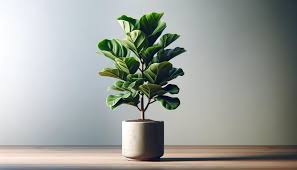
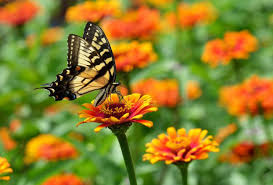
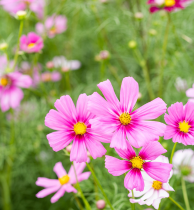
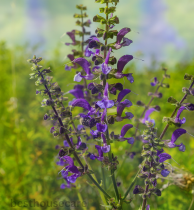
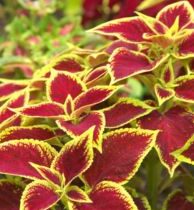
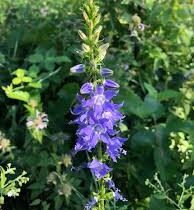
Leave a Reply
View Comments